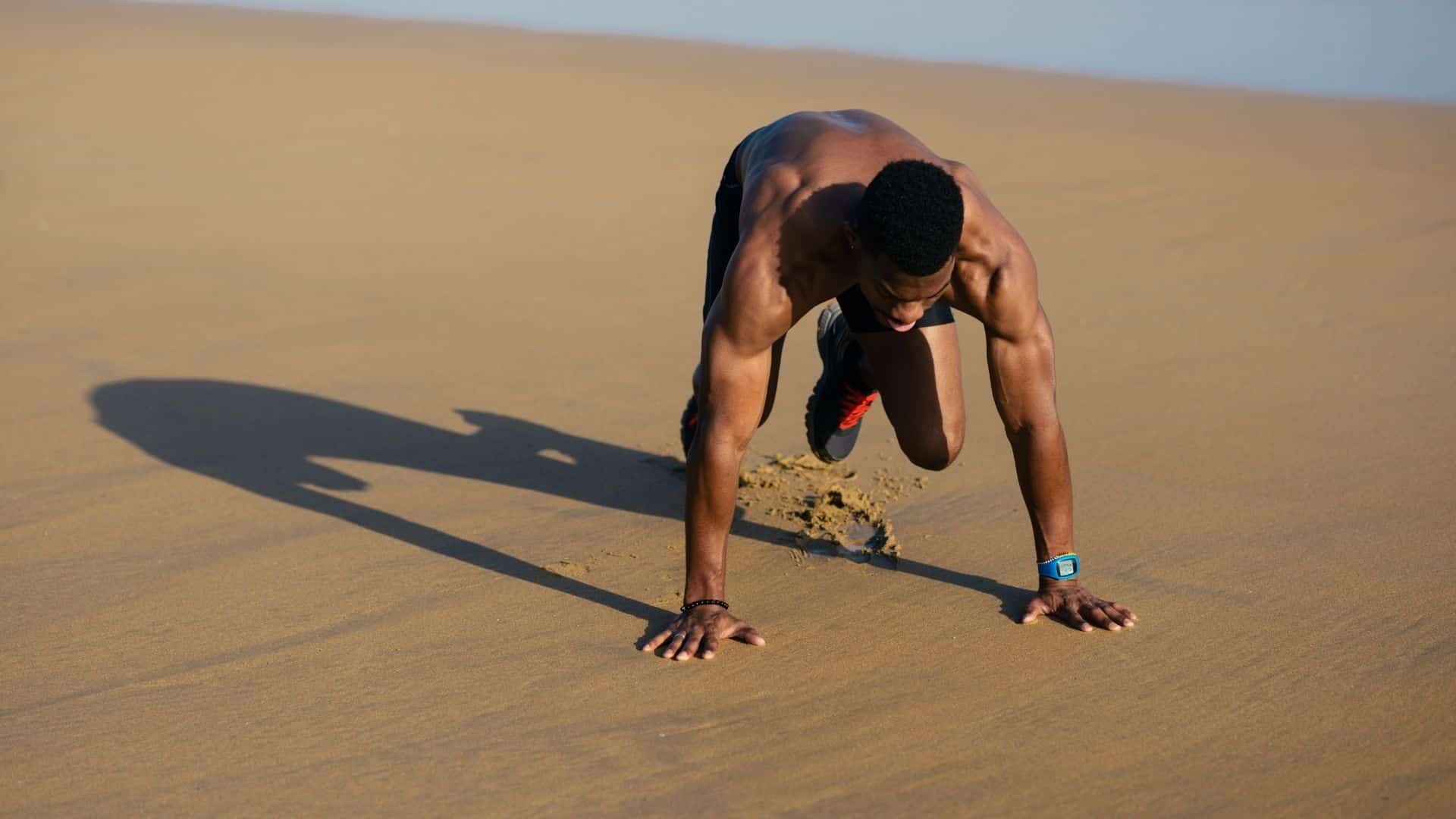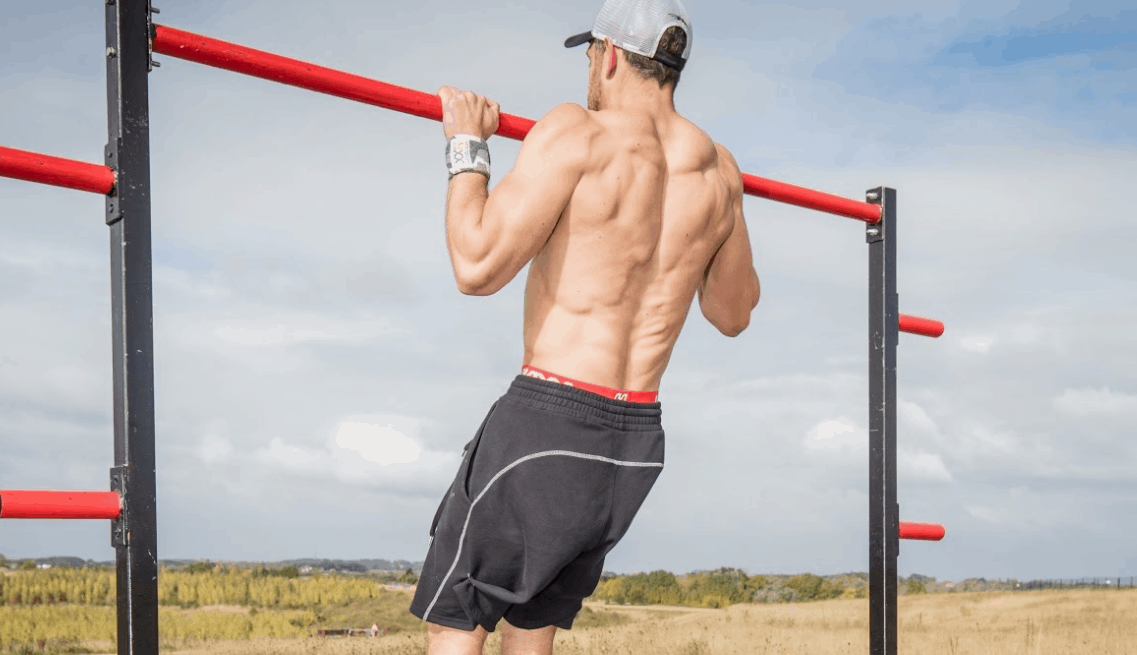You don’t need expensive gym equipment to put together a killer workout. Top athletes around the world rely on calisthenics— bodyweight workouts— to improve their strength, endurance, athleticism, and body composition.
Don’t be fooled by the lack of equipment— you still need to warm up before training. Here are some of the best calisthenics warm up exercises to prepare for your workout.
Read Also: The benefits of Calisthenics – 8 Reasons to do bodyweight workouts
The Importance of Warm Up Exercises Before a Calisthenics Workout
The warm up is an important part of any type of workout. Even yogi masters will engage in a few warm up exercises before moving into more intense movements.
A calisthenics workout is all about challenging your body and seeing what it can do during training, using bodyweight movements like pull-ups, squats, and push-ups. Here are some of the main reasons you should start with a warm up before amping up your calisthenics exercises.
Increasing Your Heart Rate
Starting with a warm up routine helps you gradually increase your heart rate in preparation for your workout. Exercise is a stressor on your body, even though it’s a good thing. Engaging in a warm up gets your heart ready for what’s ahead without shocking your system.
Related: Best CrossFit Jump Ropes That Will Take Your Training To the Next Level

By starting your calisthenics training with a warm up, you’re helping build your endurance and engaging your energy systems. This is similar to starting your car earlier on a cold day.
Prepare Your Muscles
You should never train a cold muscle. As you get your heart rate up, you’ll also be increasing the blood flow to your muscles to tell them to wake up and get ready. In combination with targeted movements, this can improve your muscle activation and help you get more from your workout. It will also help you achieve proper form earlier in your training.
To understand the importance of muscle activation, consider the first few bodyweight squats when you start exercising. Your depth will likely be shallower than usual, and the movement will feel tight. After a few bodyweight squats, your form improves, and your joints stop protesting, leaving you ready to crush your workout.
Related: A Rehab Physiotherapist’s advice on how to avoid, but also heal from common CrossFit injuries
Injury Prevention
What happens when you push your muscles and joints to perform before they’re ready? You put yourself at risk for a debilitating injury. It only takes one wrong move to put you out of training for a few weeks.
By warming up your muscles and joints, and increasing your blood flow, you’re putting less stress on your joints and tendons and ensuring they get adequate oxygen to thrive. A proper warm up turns your body into a well-oiled machine.
Related: Foam Rolling vs Stretching – Know when to use each method

Best Outdoor Pull Up Bars
Scale the Intensity
Jumping into a workout at top speed has two major pitfalls. First, you’re more likely to burn out quicker as your body is ill-prepared for the work ahead. Secondly, the first portion of your workout won’t be as effective if you’re starting cold, meaning you’re leaving progress on the table.
Warming up allows you to scale the intensity for a more effective, sustainable calisthenics workout.
Read Also: Top 6 Best Air Bikes For CrossFit
Best Calisthenics Warm Up Exercises
Warm up sessions don’t have to be long-winded to be effective. Depending on the intensity of your training, 10-20 minutes is perfectly reasonable. Your warm-up should include a combination of cardio, mobility, and simple bodyweight exercises for muscle activation.
Here are some of the best calisthenics warm up exercises to prepare you for your workout.
Cardio
When it comes to cardio warm-ups, the options are endless. Using a jump rope or jogging are common calisthenics warm-ups that incorporate plyometric movements. You can also use exercises like plank complexes (moving between front and side planks), mountain climbers or burpees to get your heart rate up.
Read Also: What is a Metcon Workout & 5 Conditioning Workouts for Beginners

Mobility and Flexibility
Mobility and flexibility often get used interchangeably, but they’re two separate things. Being flexible means being able to get through the entire range of motion. Being mobile means maintaining strength throughout your range of motion. While doing a static stretch is great at the end of a workout, using dynamic stretches is better for warming up.
Related: Bench Press Shoulder Pain – Know when to be wary
Some of the best mobility and flexibility warm up exercises include:
Squat and Reach
Squatting isn’t just about depth; it’s about keeping your torso upright and engaged. Use this compound movement to warm up your upper and lower body simultaneously.
- Get into the bottom of a bodyweight squat with your hands pressed on the floor in front of you.
- Slowly raise your right arm toward the ceiling, turning your head to look at your hand. Focus on keeping your left knee pointed out to prevent caving.
- Hold for three seconds, pushing your range of motion, then lower to starting position.
- Repeat on the other side.
Complete this movement five times on each side.
Read Also: Physiotherapist recommended Ice Pack Wraps for common injuries
Ankle CARS
CARS— Controlled Articular Rotations— are powerful movements for improving your mobility. Ankle cars should not be treated as ankle rotations; they should be slow and controlled.
- Sit on the floor with your legs extended. Loop your right arm under your left leg and pull it toward you, allowing the knee to bend. Use your left arm to lock it in position to prevent compensations.
- Flex your toes toward you and slowly rotate your ankles while maintaining dorsiflexion. Once you complete one rotation, turn the other way. That’s one rep.
- Switch to the other side when all reps are complete.
Try for five full reps on each side. This movement should be slow and challenging!
Read Also: The Ultimate Guide To Improve Ankle Mobility For CrossFit
Shoulder CARS
Like ankle CARS, shoulder CARS use controlled rotations to improve your range of motion and prevent injury. You can also adapt this exercise using a resistance band or PVC pipe.
- Stand with your arms by your side and feet hip-width apart.
- Slowly raise your arms in front of you with your palms facing each other. Continue upward and back until your arms are extended overhead and unable to go further.
- Rotate your shoulders so that your palms are facing outward and continue the motion behind your back until your arms are back by your sides.
- Reverse the movement, allowing your shoulders to rotate when you reach the end of your ROM until you get back to starting position. That’s one rep.
Do 5-10 reps as a part of your calisthenics warm up.
Read Also: Ultimate Shoulder Workouts Guide for Women
Muscle Activation
Muscle activation is an important part of both weight training and bodyweight strength training. Using low-level resistance can fire up your neurons and get you prepared for the work ahead.
Read Also: 8 Treadmill Workouts for Beginners and Weight Loss
Some powerful muscle activation exercises include:
Bear Crawl
Bear crawls work your entire body, including your shoulders, glutes, hamstrings, and core. Take it slow and controlled when doing this incredible bodyweight exercise.
- Start in a quadruped position. Then, tuck your toes and lift your knees, so your shins run parallel to the floor. Brace your core and maintain a flat back.
- To start moving, simultaneously step forward with your left hand and right foot without allowing your hips to shift. Repeat using the opposite hand and foot.
Proceed down the length of a track or for a count of 10-20 “steps.” You can also perform the movement backward for an extra challenge.
Inchworms
Inchworms are primarily a core bodyweight exercise, but the dynamic motion activates the stabilizers in your trunk and shoulders as well. This exercise is surprisingly challenging and makes for a simple-yet-effective calisthenics warm up.
Stand upright with feet hip-width apart.
Raise your arms overhead and do a forward fold until your hands touch the floor.
Slowly walk out with your hands until you’re in a plank position. Hold for five seconds.
While in the plank position, start to walk your feet in toward your hands.
Stand up and stretch your arms overhead before returning to starting position. That’s one rep.
To increase the intensity of this bodyweight exercise, add a push-up to the plank. Do 5-10 reps.
Conclusion
Before you start your next calisthenics street workout, set aside some time to warm up. Use these exercises to create a warm up circuit that gets your blood pumping and muscles ready to go.

